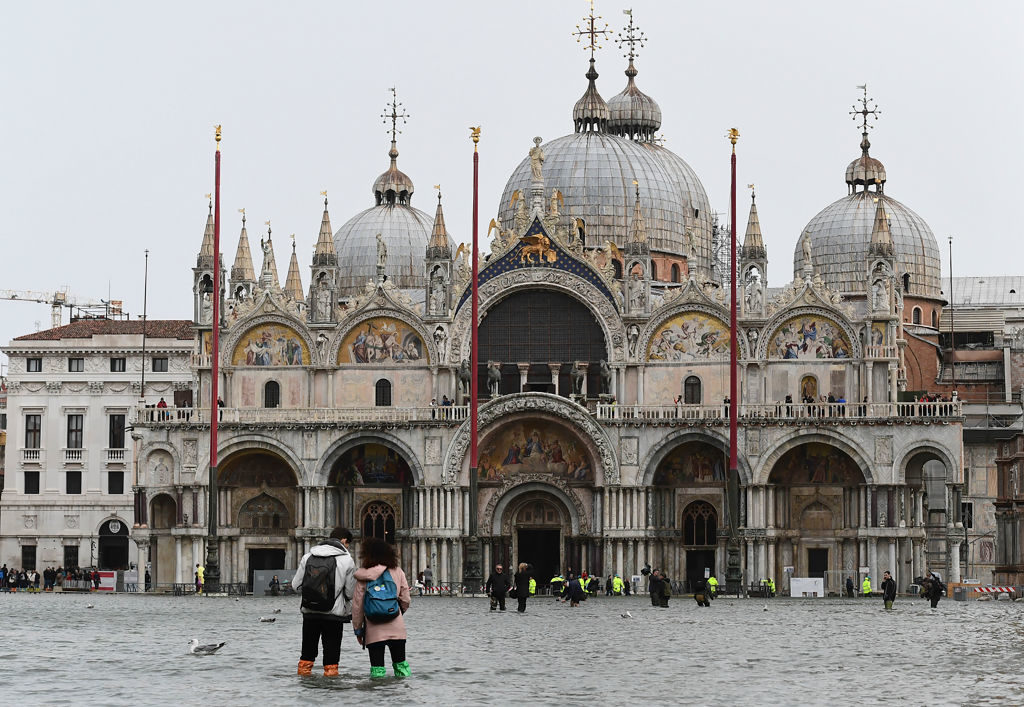Art & Exhibitions
Damaged in Venice’s Historic Flooding Last Week, Two Miró Tapestries Were Restored in Record Time for an Exhibition
Salt water damaged the works worth a combined €1 million.

Salt water damaged the works worth a combined €1 million.

Damaged by salt water during the exceptional flood that hit the city last week, two tapestries by Joan Miró were restored in record time and, against all odds, installed at the eleventh hour for the opening of an exhibition at the Palazzo Zaguri in Venice.
Museum workers had thought the tapestries, which are worth a combined €1 million ($1.1 million), were safe from the rising water levels because they were stored on the second floor. But on Monday night, October 29, they discovered they had been soaked from another source: a leaky sink. (The heavy rainfall had affected the plumbing in an upstairs bathroom.) Salt water damaged the two unnamed compositions produced in 1975 and 1985.
The salty tapestries were quickly shipped off to the Scassa tapestry factory in Asti, northwestern Italy, for emergency restoration. Technicians immersed them in a tank of limestone-purified water filled with natural herbs, rinsing them every hour until they were returned to their former glory.

Joan Miró, untitled (1985). Courtesy Palazzo Zaguri.
Mauro Rigon, the CEO of Venice Exhibition, the company that organized the show, says the works were dried and made it back to the museum “just in time for the opening” on Friday, November 1. They are now on view in the show “From Kandinsky to Botero, All in One Thread” until May 1, alongside 100 other tapestries by artists including Fernando Botero, Giorgio de Chirico, Salvador Dalí, Henri Matisse, and Andy Warhol.
The organizers of the exhibition said in a press release that they were “moved” by many generous offers from Italy and Spain to help restore the works and “grateful” for the awareness of their situation generated online.

Joan Miró, untitled (1975). Courtesy Palazzo Zaguri.
The high water in the city peaked at 156 centimeters on Monday, a level that breached 150 centimeters for just the sixth time in 80 years. The exhibition organizers also thanked authorities and law enforcement for working hard to ensure the safety of Venice. They gave a special shout-out to the governor of Veneto, Luca Zaia, and the mayor of Venice, Luigi Brugnaro, for their coordination during the emergency.